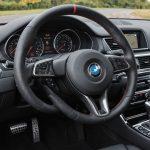Importance of Headlight Alignment for Visibility
Proper headlight alignment is crucial for ensuring optimal visibility, especially in challenging conditions like fog. In foggy weather, light scatters, and poorly aligned headlights can intensify this scattering, creating a glare that reduces visibility rather than enhancing it. When headlights are correctly aligned, they project light at the precise angle needed to illuminate the road effectively without reflecting off the fog, thus enhancing driver safety and vision.
The risks associated with misaligned headlights extend beyond foggy conditions. Poor alignment can lead to uneven light distribution, causing hazardous blind spots and dazzling oncoming drivers. Such conditions increase the likelihood of accidents, highlighting the importance of regular checks and adjustments.
Also to see : Mastering Drift: A Complete Guide to Safely and Legally Tuning Your UK Car for Maximum Drift Performance
In the UK, legal regulations stipulate that headlights must be adequately aligned to meet specific standards. Failure to comply not only compromises safety but can also result in penalties during MOT inspections. Therefore, understanding the importance of alignment not only from a safety perspective but also from a legal standpoint is essential. Regular maintenance and alignment checks are simple steps that ensure compliance with the UK’s stringent safety requirements while also maximising visibility on the road.
Tools and Equipment Needed for Headlight Alignment
Effective headlight alignment is pivotal for safe night driving, requiring specific tools whether you choose a DIY alignment or utilize professional services.
Have you seen this : Experience the elegance of prestige driver services in belgium
For those aiming to adjust their vehicle’s headlights at home, a few essential tools, such as a tape measure, masking tape, and a flat, level surface, are indispensable. A tape measure ensures precise distance measurements, while masking tape helps mark alignment points on a garage door or wall—vital for accuracy. Having a flat and level surface ensures the vehicle’s stance is correct prior to adjustments.
For greater precision, particularly with newer vehicle models featuring more complex headlight systems, professional alignment tools are advised. Tools like beam setters and digital alignment systems provide unmatched accuracy. Beam setters, for instance, use lenses and mirrors to project the headlight’s beam pattern onto a grid, allowing more detailed and nuanced adjustments. Digital systems often incorporate laser and sensor technology to provide real-time data for calibrations.
Using the correct tools not only ensures that the headlights’ beam aligns correctly with the road but also maximizes visibility, thereby enhancing safety. Thus, investing in suitable tools, or opting for professional services, can prevent glare to other drivers and ensure optimal driving conditions.
Step-by-Step Guide to Aligning Car Headlights
Aligning your car headlights is an essential part of DIY car maintenance to ensure safety and visibility on the road. Whether you’re a seasoned hobbyist or just beginning, the headlight adjustment process is straightforward.
Preparing Your Vehicle for Headlight Alignment
Before starting the step-by-step headlight alignment, park your vehicle on a level surface. This ensures accurate measurements and avoids uneven adjustments. Turn off the engine and engage the handbrake to keep the car stationary. Clean the headlight lenses to eliminate any obstruction that might affect beam clarity.
Measuring Headlight Height and Angle
Next, use a wall or garage door to gauge the headlights’ position. Park the car facing the wall at about 25 feet and mark the beam’s central point with tape. Measure the headlight height from the ground to keep the angle consistent. Ensure the marks are at the same height as the center of the car’s headlight bulbs.
Making Adjustments and Testing Visibility
For optimal performance, systematically adjust the lights so the brightest spot on each beam is just below the tape mark. Test your adjustments in varying conditions, checking for effectiveness in low-visibility settings. Fine-tune as necessary until satisfied with the lights’ visibility and reach. Proper alignment contributes greatly to night-time driving safety and comfort.
Regional Considerations for Headlight Alignment in the UK
Navigating the unique UK weather conditions is vital, especially with frequent foggy incidences affecting visibility on the roads. This often poses challenges for drivers, necessitating an understanding of how weather patterns can influence headlight performance. When driving in foggy conditions, the appropriate adjustment of headlights can drastically improve visibility, enhancing safety on the road.
Impact of UK Weather on Headlight Alignment
The UK’s weather, notorious for its fog, requires drivers to adjust headlights accordingly to improve road safety. Fog tends to reflect light, causing glare if headlights are misaligned. Correct alignment minimizes glare and enhances visibility. Foggy driving demands low-beam settings to avoid light reflection from the fog itself, ensuring clearer vision of the road ahead.
Recommendations and Regulations
When it comes to regional driving regulations, UK traffic guidelines stipulate the use of fog lights when visibility falls below 100 meters. It is essential to regularly check headlight alignment to conform with these regulations. Proper alignment not just adheres to legal standards but also optimizes light output, reducing the risk of accidents. Following local guidelines ensures that the safety of both the driver and other road users is prioritized in foggy weather.
Integrating Fog Lights with Headlight Alignment
Proper use of fog lights is essential, especially when driving in foggy weather. These lights are specifically designed to cut through dense mist, improving visibility considerably. Their placement and design allow them to cast light underneath fog rather than bouncing off it, which is crucial for effective headlight enhancement.
When driving in foggy weather, it’s a best practice to use fog lights in conjunction with your regular headlights. While headlights provide a broader scope of vision, fog lights focus on the immediate road space and lower vision. This combination ensures that the driver maintains a clear view of the road and surrounding conditions.
Adjustments in alignment may be necessary for optimal performance. Align fog lights slightly downward from regular headlights to avoid blinding oncoming traffic and achieve maximum road visibility. Additionally, check these lights regular to ensure they are functioning correctly, as even small misalignments can significantly impact visibility.
Remember, fog lights should only be used in conditions for which they are intended. Using them in clear weather can cause glare and create unsafe driving conditions for others. Proper adjustment and usage can make a substantial difference in foggy driving scenarios.
Maintenance Routines for Headlight Visibility
Proper headlight maintenance is crucial for ensuring optimal road safety, especially during nighttime driving and adverse weather conditions. To maintain effective visibility, incorporate these practices into your routine checks:
-
Regular Checks: Conduct frequent examinations of your headlights to identify any potential issues, such as cracks or cloudiness. This simple yet effective habit helps maintain visibility improvement during your drives.
-
Signs of Misalignment: It’s vital to recognise when headlights are misaligned. Indicators include uneven lighting on the road, one beam appearing higher than the other, or if oncoming drivers frequently flash their high beams. If these signs are noticeable, it’s time to realign your headlights to maintain consistent visibility.
-
Headlight Cleanliness: The cleanliness of your headlights cannot be overstated, particularly when driving in fog. Dirt and grime accumulation can significantly impede the light’s transmission through adverse weather conditions, reducing visibility improvement. Regular cleaning can prevent this and enhance your overall driving safety.
Finally, by following these maintenance practices, you ensure your headlights perform efficiently, keeping you and everyone on the road safe. Effective headlight maintenance is an easy yet crucial task for every vehicle owner to incorporate into their car care routine.










